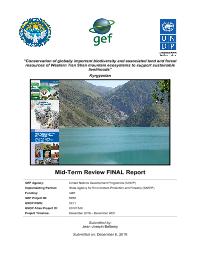
Conservation of globally important biodiversity and associated land and forest resources of Western Tian Shan mountain ecosystems to support sustainable livelihoods
The Western Tian Shan is one of the world’s 200 priority ecoregions and one of 34 global biodiversity hotspots, and has been designated as a natural World Heritage Site. The Tian Shan act as a bridge connecting fauna and flora of Himalayas and Hindu Kush across Pamir with biota of Siberia, and across Dzungar Ala-Tau and Altay with biota of Mongolia, which results in a unique combination of fauna and flora elements. In the Western Tian Shan, fauna and flora are characterized by high diversity and concentration in a relatively small area. In terms of flora, higher plants number more than 2,500 species, and endemism of the flora is 12%; vertebrates number well over 400 species. However, many of the Western Tian Shan’s species and unique ecosystems are threatened by poor forest and land management; the region is home to 54 Red List plant species, and 27 Red List species of fauna, including the snow leopard. The forests of Western Tian Shan have juniper, spruce, maple, nut, fruit, and tugai forest communities, including fruit and nut wild relatives, but the regions forest resources are shrinking. These forests suffer from inadequate forest management and enforcement, and are degraded by intensive land use, such as overgrazing of forest pastures. The rate of natural regeneration and reforestation is unable to keep pace with the rate of forest degradation. The grassland areas of the Western Tian Shan are subject to extensive, uncontrolled agro-pastoral land use. Growing livestock numbers lead to extensive unregulated use of mountainous grasslands for grazing and causes high disturbance to wild ungulates such as argali and ibex, key snow leopard prey species. The rangelands of Western Tian Shan are susceptible to overgrazing, droughts, and inadequate natural regeneration in the face of these pressures. Today, over 60% of pastures in Western Tian are eroded and the quality of pastures has declined by four times compared to 1980s levels.
Output 1.4.1 Solutions scaled up for sustainable management of natural resources, including sustainable commodities and green and inclusive value chains
1: Others



Mr. Bellamy Jean-Joseph, International Consultant